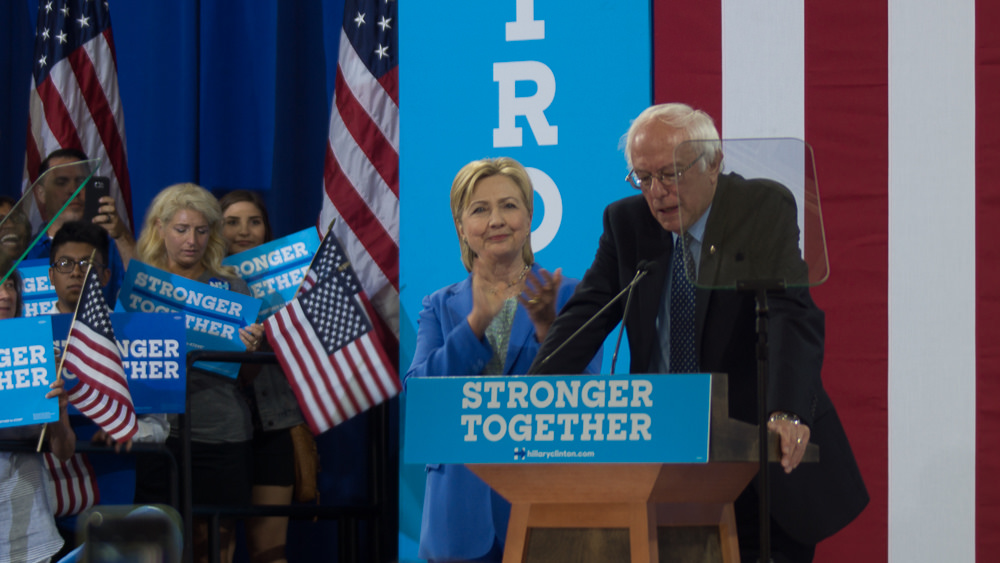In describing the challenges faced by the Democratic Party today, this is a fairly common refrain:
In the eight years following Democrats control of the presidency and both chambers, Democrats have lost about 1,000 total seats― from state legislatures to governors’ mansions. Today, Republicans control 56 percent of all state legislative seats.
Given that reality, an awful lot of people are coming up with their ideas about how that happened and what Democrats can do to solve the problem. Oftentimes, the discussion focuses on whether or not it is more important to persuade Republican voters or to mobilize those who align more closely with Democrats.
The arguments on either side of that divide make for some strange bedfellows. For example, Bernie Sanders has made no secret of the fact that he thinks Democrats should do a better job of winning back white working class voters who backed Donald Trump. Interestingly enough, that is similar to the argument made by Rahm Emanuel and Bruce Reed in their op-ed about what Democrats need to learn from Bill Clinton.
The most vocal spokesperson for the idea that mobilization is more important than persuasion is Steve Phillips, founder of Democracy in Color. But the most effective arguments for mobilization aren’t happening in op-eds or books, they’re taking place on the ground with organizations like the Texas Organizing Project.
The truth is that this is probably one of the many times that an either/or argument is the wrong way to go. Any strategy that completely rejects either persuasion or mobilization is a losing proposition. In order to Democrats to improve things, both will be required—perhaps with a different emphasis in different communities.
There is another fascinating idea about how to solve this problem that seems to have popped up in response to the big gains Democrats accomplished in last week’s election. It is the direct opposite of what political scientists and pundits have always assumed about whether or not candidates at the top of the ticket have “coattail” effects. People are starting to talk about “reverse coattails.”
In districts with highly competitive Delegate races in Virginia, Democratic vote turnout increased by 40 percent. That is a phenomenon that we refer to as “reverse coattails.” Essentially, it means that the folks running for state and local offices were responsible for increasing turnout for statewide candidates like Governor, Lieutenant Governor, and Attorney General.
I first heard that term when reading what Joan Walsh wrote about last Tuesday’s election.
Given the election results, and the number of new candidates elected, it’s possible Virginia saw something new: a reverse-coattails effect, where the surge of candidates running for the state House, most of them women, helped propel Northam and his ticket to victory.
A lot of the talk about reverse coattails is coming from the group Run for Something, who have now recruited 15,000 young people to run for local office. Here is how the founders of that organization explained the idea to Jen Kirby:
Ross Morales Rocketto
If there’s a Republican district that went for Trump by 20 or 30 points in 2016, we still need to be running people in those districts. Even if those folks don’t necessarily win those races. The research shows those folks help move turnout for the top of the ticket, so if we have a city council candidate running that will help in any overlapping state legislative districts and then it helps statewide campaigns.
Amanda Litman
Red districts are places that the [Democratic] Party hasn’t invested in — not because of bad intentions, just prioritizing resources. But our candidates are able to engage volunteers and talk with voters, which is the literal definition of party building. We had candidates running yesterday in districts that Democrats haven’t contested in decades, but they were able to win on the strength of the candidates.
Litman captured the challenge posed by a reliance on reverse coattails: resources. Graham Vyse notes why that will be more of a problem in the 2018 midterms.
…there’s the matter of finite resources. Only New Jersey and Virginia had statewide legislative elections this year, and the Democratic control of the former was a foregone conclusion. So Democrats poured money and organizers into Virginia. Next year, statewide elections are being held for 87 of the 99 legislative chambers in the country. “One of the biggest challenges of other states next year is you’re not going to be the only show in town the way Virginia was,” Fiddler said.
For all the attention being paid to the role of the DNC, the truth is, that organization can do a better job of focusing their resources, but they can’t do this alone. That is precisely why I suggested that what is needed is an “all hands on deck” approach. Contrary to how Judith Shulevitz framed the situation, Democrats will need both older white suburban women organizing friends in their living rooms to figure out “which Republicans in their town councils or county governments or state legislatures or congressional districts they wanted to get rid of” as well as an organization that recruits and supports millennials to run for local offices, which is what just happened in deeply red Oklahoma this week. Once again, this is not an either/or question, it is both/and. Any attempt to engage people who have previously eschewed politics should be welcome.
I doubt that there is one magic bullet that can turn things around for Democrats, especially when it comes to the challenge of down-ticket races. But the energy springing up from the idea of reverse coattails is a sure-fire approach to rebuilding the party from the ground up.



